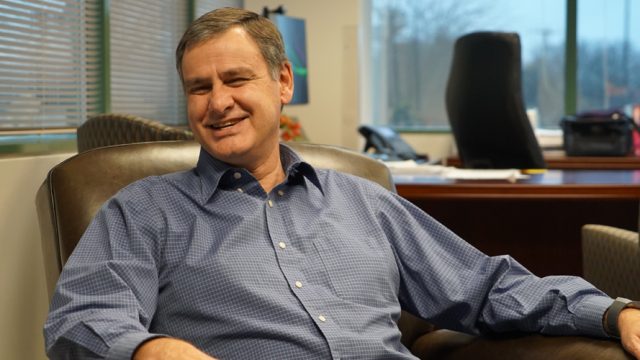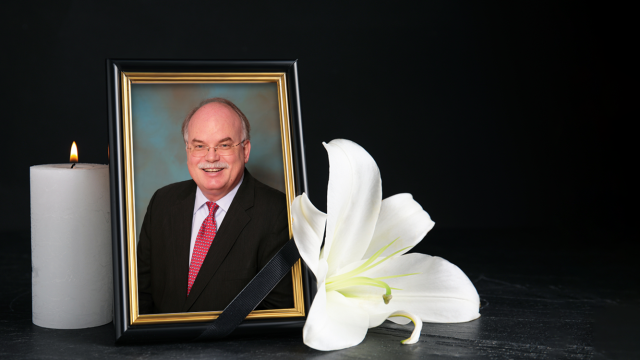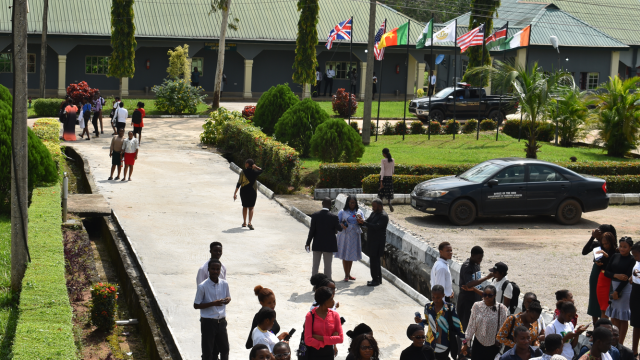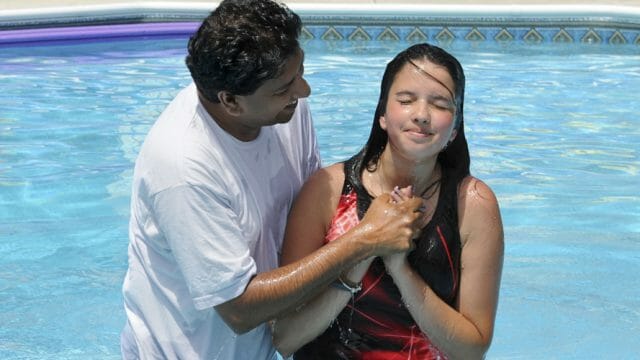Maranatha celebrates five decades of construction, service, and changing lives.
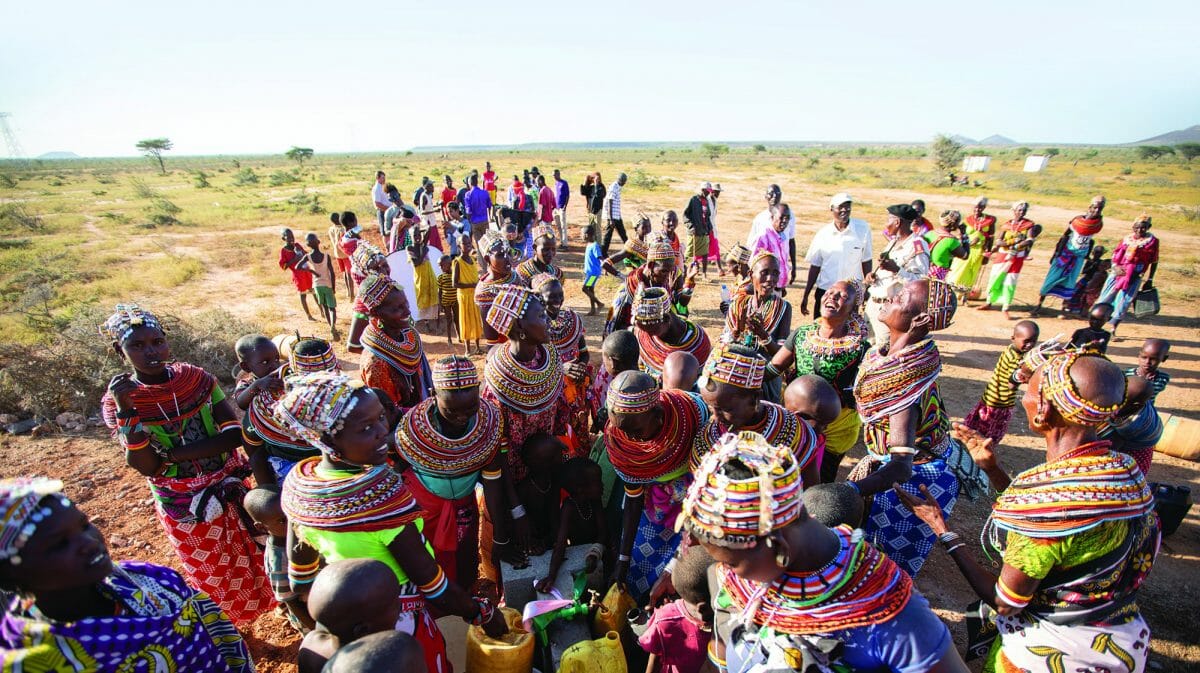
On a warm, sunny day in July, a peculiar sight is seen on the campus of the Kiutine Adventist Secondary School in Kenya. A round plastic swimming pool sits amid a landscape of red dirt, acacia trees, and simple block buildings. Surrounding the water is a large group of teenagers. They watch, hopeful, as a young woman climbs into the pool and joins a man dressed in black.
The man raises his arm and speaks. “This is Zhenzhu. Zhenzhu has fallen in love with Jesus again on this trip. She wants to live her life for Him. Because you love Jesus and want to make Him the Lord of your life, I baptize you in the name of the Father, Jesus Christ His Son, and the Holy Spirit.”
He dips her into the water. When she emerges, the crowd erupts into cheers.
This happens again and again—37 times—with teenagers and adults who have lined up to recommit or give their hearts to the Lord. By the time they’re finished, the pool has acquired a layer of dirt, its sky-blue floor covered in red. But no one seems to notice. They are too busy hugging, crying, and singing.
Ultimate Workout
This is the scene on the last Sabbath of the Ultimate Workout (UW), an annual mission trip exclusively for teens, organized by Maranatha Volunteers International. On this twenty-ninth edition of the project, 111 volunteers have gathered in Kenya to build a boys dormitory and classroom at Kiutine. And while the physical work of UW is focused around construction and outreach, the goal is Jesus. Each day begins and ends with worship, a divine connection to God. Couple this with a new environment, new relationships, and new vulnerability, and the result is spiritual transformation.
“Everyone should have this experience,” says 16-year-old Elise Hall from Texas, United States, who was among the people baptized on Sabbath. “Everyone should be able to get out of their comfort zone and be put into a place they’re not familiar with, with people they’re not familiar with, and just learn to adapt and love and grow with people they don’t know.”
UW is one of Maranatha’s most popular projects, drawing anywhere from 100 to 200 teens each summer. As Maranatha celebrates its fiftieth anniversary this year, it’s interesting to consider how young people were a motivation in the creation of the organization.
Maranatha’s Story
The story of Maranatha begins in 1969. John Freeman, a photographer and pilot from Michigan, wanted to create a service experience for his daughters. So he organized a team of young people and recruited pilot friends to transport the group. In December, 28 volunteers flew to the Bahamas over Christmas to build the Eight-Mile Rock Adventist Church.
Maranatha Flights International was born. The program started with a few mission trips and mostly relied on volunteers who could fly their own aircraft to the work site. Early projects were in places such as Guatemala, Honduras, and Colombia, with a handful of participants.
A couple years later Caris Lauda, Sabbath School leader for the Adventist Church in North America, contacted Freeman.
“He said, ‘We need a church built in Yellowknife, Northwest Territories. Would you come up?’” recalled Freeman during an interview in 2008 (he died in 2017).
The proposed project was far bigger than anything Maranatha had done, but Lauda promised to help recruit volunteers by publicizing the project throughout North America. Maranatha accepted the challenge, and in 1973, 140 volunteers in 23 private planes flew to Canada. In two weeks they built a church from the ground up.
The project was a success, and people took notice. The story of Yellowknife circulated throughout Adventist publications and was featured in Mission Spotlight.
“I think Yellowknife played a very important part in Maranatha. . . . It sent a signal to the world church that it was good for the church, good for the people,” says Leon Slikkers, one of the original board members of Maranatha.
In 1982 the board hired Don Noble to be president of Maranatha. Then in 1989 Maranatha merged with Volunteers International, a Virginia-based humanitarian organization. The organization was renamed Maranatha Volunteers International; that year the headquarters, located in Berrien Springs, Michigan, moved to Sacramento, California.
Exponential Growth!
In the years that followed, Maranatha’s mission grew exponentially with major initiatives, such as building churches in the Dominican Republic and India, constructing a seminary in Communist Cuba, and drilling water wells in Africa. In some cases they partnered with other organizations such as Insight magazine and ASI (Adventist-laymen’s Services and Industries).
Today Maranatha has constructed more than 11,000 buildings, drilled 1,000 water wells, and mobilized an estimated 90,000 volunteers in nearly 90 countries. More than 2,200 volunteers participate in mission trips each year.
More Than Numbers
While the numbers give a comprehensive perspective on the organization’s overall accomplishments, they obscure what truly matters: the story of individuals who have been impacted by missions.
“I believe that Maranatha has provided more than schools and more than churches. They’ve provided the development of thousands of individuals who went on these projects and changed their lives and their witness for God everywhere they went after that,” says Robert Bainum, founder of Volunteers International and former board member of Maranatha.
Like Maritza Piedra in Cuba. She had been worshipping in a church so small that people had to sit outside and listen through the windows. She prayed for a new church for so long that she developed calluses on her knees. When her prayer was finally answered with a church that seats 750 people, she cried tears of joy and gratitude.
Or like the Turkana tribe of Chumviere in Kenya. The women used to walk for miles to reach the nearest well, spending hours each day fetching water. Today they have a well right in their village.
Or like 14-year-old Mia Goldman from California, United States. She had no knowledge of Adventists, and church was a place to go once or twice a year for holidays. Then a neighbor told her about Maranatha and the mission field. Inspired, Goldman and her friends organized an event that raised more than US$15,000 for a water well. After that, the same neighbor invited her on a mission trip. Goldman, along with her mother and brother, headed to Kenya, where they built a much-needed classroom at the Gucha Adventist Preparatory School. Coming from a relatively privileged background, Goldman’s eyes were opened to the reality of life outside her bubble.
When she witnessed the connection her fellow volunteers in Kenya had with God, she felt a calling to learn more about Him. “I wondered, what has God done for these people to make them want to worship more? It made me wonder if I could be closer to Him,” she says.
A Focus on Mission
On a mission trip the noise of the world tends to drop away and is replaced by a simple focus on service. During the past five decades much has changed about Maranatha—from its building designs to volunteer processes to staff—but the one constant is that simple, singular focus on the gospel commission. Maranatha is sharing God’s love with congregations praying for a church, children needing a school, communities desperate for water, and volunteers seeking to renew their connection with Jesus Christ.
Or in Goldman’s case, meeting Him for the first time.
To learn more about Maranatha Volunteers International, visit Maranatha.org.


